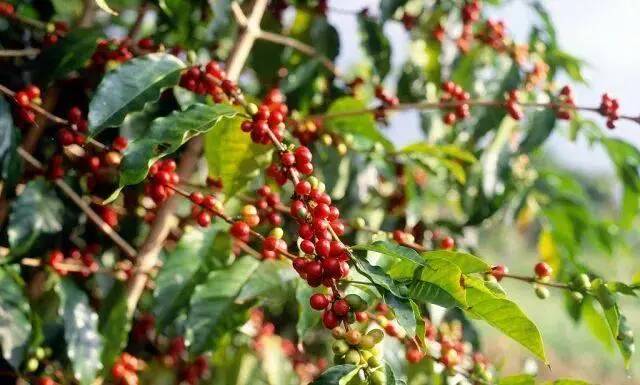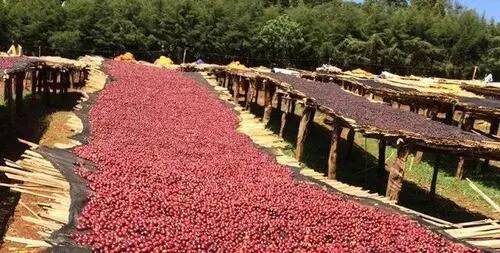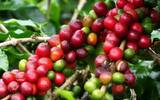Ethiopian Coffee producing area, Guji producing area, Sakui Coffee Development History, Sakui Coffee 7.0 introduction
When it comes to coffee, many people think of Ethiopia, the largest Arabica coffee producer in Africa with a long history. And there are a wide variety of coffee, and it is estimated that there are now 10000 to 15000 coffee varieties in Ethiopia, most of which have not yet been formally identified.

Ethiopia is the largest coffee gene bank in the world. As the birthplace of coffee, Ethiopia has many coffee producing areas, among which Guji, Yirgacheffe and Sidama are more famous. Among them, Guji is the more famous coffee producing area of Huakui.
The Guji producing area, which once belonged to the Sidamo producing area, was independently divided into new producing areas by the Ethiopian Commodity Exchange (ECX) in 2010. The most famous coffee bean in Guji is Sakuran, which was born in Hambella, one of the sub-regions of Guji. The west of Humbera is opposite the Cochel Mountains of Yegashefi, planting up to 2100-2300 meters above sea level, and connects to the east and south of Guji's other sub-producing areas of Shakiso and Uraga respectively. At present, there are about 20 processing plants of various sizes in Humbela production area, and the harvest period is from November to January of the following year. Sakuran became famous in the TOH (Ethiopia National Taste of Harvest Competition) competition in 2017, which won the championship with its outstanding strawberry cream flavor. Also in 2017, Li Jianfei, the runner-up in China in the World Coffee Brewing Competition, Li Jianfei from Beijing also won the runner-up with Sakui Coffee beans, adding a lot of fame to Sakui Coffee beans.
The winning coffee bean is a sun bean from DW's "Buku Abel" processing plant in Humbera because of its strong strawberry and creamy aroma. Therefore, Chinese importers of raw beans named the bean "Sakuran". Later, DW increased the number of processing plants in Humbera to four, in addition to the original "Buku Abel" to add "Buku Saysay", "Haro Soresa" and "Tirtiro Goye" processing plants, which can produce about 1100 tons of coffee a year. In all these estates and processing plants, strictly speaking, only sun-cured coffee from the "Buku Abel" processing plant is called "Sakuran Coffee beans", which is why Sakui 2.0, Sakui 3.0 and Sakui 3.1 appeared in 2018 and 2019, respectively.

Sakuran 2.0 was launched in 2018 and 3.0 and 3.1 in 2019. The Sakuran x.0 series has been launched every year since then, and it has been launched to Sakui 7.0 in 2023. However, with the expansion and development of DW's processing plant year by year, as well as the increase in production, its flavor is obviously different from that of the famous Huakui coffee beans in 2017.
At present, Qianjie starts with Sakui 7.0, which comes from the Buku Abel processing plant and uses sun treatment. When using the proportion of V60 mint 1purge 15 to taste, the entrance will have citrus, apricot, passion fruit-like sour and sweet, slightly fermented taste, smooth taste and tea taste.
Important Notice :
前街咖啡 FrontStreet Coffee has moved to new addredd:
FrontStreet Coffee Address: 315,Donghua East Road,GuangZhou
Tel:020 38364473
- Prev

What makes the V60 stand out among the many filter cups?
If you are a beginner coffee lover and ask an experienced person to recommend you a practical, easy-to-use and good-looking hand filter cup, there is a good chance that the other person will recommend you to buy a V60. V60, a civilian filter cup that everyone has used, can be said to be a necessary device for every hand to play with the hands of the family.
- Next

Ethiopia launches a $20.8 million coffee land use program to help local coffee and agriculture
Recently, the Ethiopian government, in cooperation with the United Nations Development Programme (UNDP), officially launched a long-term plan to combat deforestation and integrate sustainability into the coffee industry. According to the United Nations Development Programme, the plan is a joint effort under the additional funding of the Global Environment Facility (GEF).
Related
- Can artificial hand brewing replace the barista's real hand brewing coffee? What is the difference between making coffee with fake hands and making coffee with real hands?
- Can't sell it?! Coca-Cola gives up selling Costa!
- The brewing parameters of the world's top rose summer coffee, ratio, water temperature, grinding and sharing! Graphic teaching on Emerald Manor Rose Summer Brewing Method!
- Jasmine milk tea, a new cup of ice?! Netizen: Why don't you just sell ice cubes
- Is it necessary to buy a cloth powder for an espresso machine? Why should we evenly distribute the powder when extracting espresso?
- What is the grinding ratio, water temperature and powder amount needed to make Combo in Mocha pot coffee? Mocha pot is suitable for making coffee deep and light baked beans??
- Caught off guard! Starbucks '15-year-old store quietly closes!
- Naixue Drink drank a stone and claimed a claim was retaliated by the merchant?!
- What is the difference between a cake filter cup and a V60 conical filter cup? What are the advantages and disadvantages of the flat-bottomed filter cup brewing solution?
- What is the difference between fine coffee powder and medium coarse coffee powder? Do I need to sift out the fine coffee powder for making coffee by hand?

